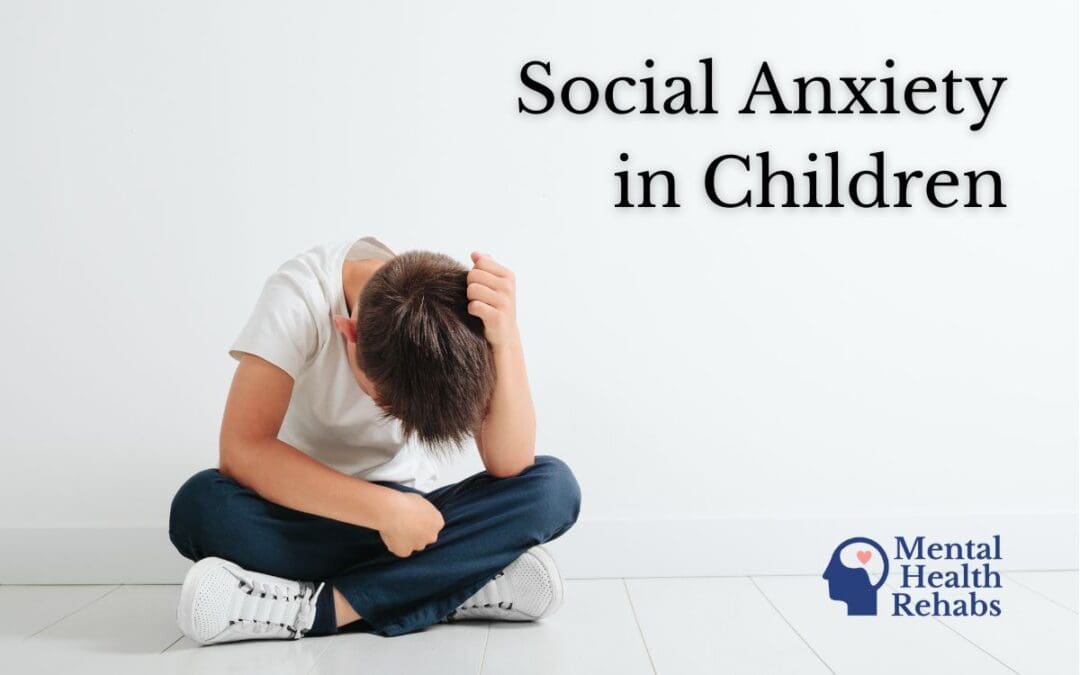We all might think of social anxiety as a grown-up problem, but it usually starts much younger than some may think. Middle school is the most common age for kids to be diagnosed with social anxiety. However, it often goes unnoticed for long periods before parents notice. This article will explore what social anxiety disorder is, how it manifests in children, and the resources you can use to support your child in managing it.
1. What is social anxiety?
Social anxiety disorder (SAD), formerly known as “social phobia,” is anxiety characterized by fear, worry, and concern in social situations.
It causes severe anxiety in social or performance situations that are not inherently threatening. The fear can be so intense that it prevents children suffering from it from doing things or going places where they’ll be expected to interact with others.
While we’re probably used to the image of a socially anxious teenager or adult from the media we consume, children can also suffer from social anxiety. It can prevent children from engaging in class and interacting with other children in their social groups.
2. At what age do children start developing social anxiety?
People who suffer from social anxiety typically start showing symptoms during childhood or adolescence, generally between 8 and 15 years old. Research shows that the median age for people to start showing symptoms is the mid-teens. Still, some may begin showing signs before adolescence.
The tricky part is that most children can hide their initial symptoms for a while. However, the symptoms will become more apparent to their parents, teachers, and friends over time.
Often, older patients describe the progression of their social anxiety as having always been anxious about social interactions, and they gradually become more anxious over time. Others may not remember a point when they weren’t socially anxious.
3. What does social anxiety look like in a child?
Symptoms of social anxiety disorder can vary depending on age.
Preschool children:
- Clinginess
- Separation anxiety
- Tantrums when separated from parents and other loved ones
- Unusually fear around unfamiliar people or situations
School-aged children:
- Difficulty making and keeping friends
- Fear of speaking up in class or to others
- Fear of joining groups of children and seeming reserved when in a group
- Unwillingness to go to school or other activities to avoid being exposed to social interactions
- Have a limited amount of friends
Behavioral symptoms:
- General trouble making friends or interacting socially outside their family
- Being upset long before they’re in a social situation
- Fear of public speaking
- Fear of meeting new people
- Fear of humiliation and embarrassment. Asking things like, “what if I say something silly?”
- Being too self-conscious about what others think about them
- Being very uncomfortable performing on a stage
Physical symptoms:
- Shaking
- Sweating
- Shortness of breath during social situations
4. How is an anxiety disorder different from shyness?
Multiple disorders are associated with anxiety, and social anxiety is one of the major ones. A common personality trait that may be confused for disordered social anxiety is shyness.
Being shy usually involves being passive, avoiding eye contact, potentially avoiding social situations, and more. The main difference between shyness and social anxiety is that shyness is a normal personality trait that doesn’t necessarily affect the child’s life and interactions to a significant degree.
On the other hand, social anxiety disorder is a mental illness that worsens over time if treatment is not provided. SAD affects all social interactions and requires specialized treatment, while shyness can be managed much more easily and tends to be situational.
5. What causes a child to have social anxiety?
As all mental illnesses tend to originate, SAD combines inherent individual traits and environmental experiences.
Children who suffer from social anxiety may have a genetic tendency for it. Also, their amygdala (brain structure that may manage fear responses) is too active, making them fearful in social situations. SAD can also be the result of learned behavior from family members.
Usually, SAD will be a combination of learned behaviors, negative experiences, major life changes, having an additional medical condition that brings attention to them, and a natural tendency for SAD.
6. How to help a child with social anxiety?
You should talk to a doctor or mental health professional if you suspect your child has social anxiety. Treatments available can help your child feel more comfortable in social situations.
Some people and resources who may help your child may include:
- A school counselor or teacher
- Pediatricians who can direct you to appropriate mental health practitioners
- Local children’s health community centers and mental health services
Get your child the help they need
Regardless of the method, what’s important is that your child receives the help they need during this crucial development period.
It’s also important to remember that parents don’t know everything all the time. It’s normal not to understand why your child is acting in a certain unexpected way. In those cases, it’s essential to seek help with the resources available to you (school, public health, etc.), with your child’s well-being as the top priority.

